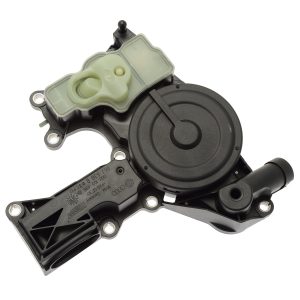Your cart is currently empty!
Positive Crankcase Ventilation (PCV)

The Role of the PCV System in an Engine – How to Check and Replace It?
The Positive Crankcase Ventilation (PCV) system plays a crucial role in the proper functioning of an engine. Its purpose is to remove gases formed in the crankcase and direct them into the intake system, reducing engine pressure and improving efficiency and environmental performance. If the PCV system malfunctions, various symptoms may appear, including excessive oil consumption, rough engine operation, and oil leaks.
How Does the PCV System Work?
The PCV system is part of the crankcase ventilation system. It operates through the PCV valve, which regulates gas flow and prevents excessive vacuum or pressure buildup in the engine.
Key functions of the PCV system:
- Prevents excessive pressure buildup in the crankcase.
- Reduces oil contamination in the intake system.
- Decreases emissions by recirculating gases for combustion.
- Ensures proper engine operation and reduces oil consumption.
Symptoms of a Faulty PCV System
If the PCV system is malfunctioning, you may notice the following issues:
- Increased oil consumption – a leaky system may cause oil to be drawn into the intake and burned.
- Irregular engine operation – idle fluctuations, starting issues.
- Elevated crankcase pressure – may cause oil leaks around gaskets.
- Increased exhaust smoke – blue smoke indicates oil burning.
- Hissing sound near the valve cover – may indicate a damaged PCV valve diaphragm.
How to Check if the PCV System is Working Properly?
To check the condition of the PCV system, follow these steps:
- Oil Cap Test:
- Start the engine and open the oil filler cap.
- If you notice strong suction or rough engine operation, it may indicate a PCV system problem.
- Oil Dipstick Test:
- Remove the oil dipstick while the engine is running.
- Excessive vacuum may indicate a leak in the PCV system.
- Inspect PCV Hoses:
- Check if the hoses are clear and free from oil deposits or carbon buildup.
- Listen for Sounds from the PCV Valve:
- A hissing or whistling sound near the PCV valve may indicate damage.
How to Replace the PCV System in Different Car Brands?
Replacing the PCV system varies by manufacturer, but the general steps remain similar:
Audi (e.g., TFSI and TDI engines)
- The PCV valve is located on the valve cover.
- Disconnect the PCV hoses and remove the valve.
- Install a new valve, reconnect hoses, and check engine operation.
BMW (e.g., N52, N54, N55, B48, B58 engines)
- The PCV system may be integrated into the valve cover or have a separate oil separator.
- Some models require replacing the entire valve cover.
- N54 engines often have leaks in the oil separator.
Mercedes (e.g., M271, M274, OM642 Diesel engines)
- The PCV system is often mounted under the engine cover or on the cylinder head.
- In some diesel models, problematic PCV valves are built into the valve cover.
- PCV hoses may require cleaning or replacement.
Summary
The PCV system in various engine brands plays a key role in ensuring proper engine operation and preventing excessive oil consumption. Regular inspection and cleaning or replacing the PCV valve can help avoid costly repairs and extend engine life. If you notice symptoms indicating a PCV issue, it’s best to take action as soon as possible.
